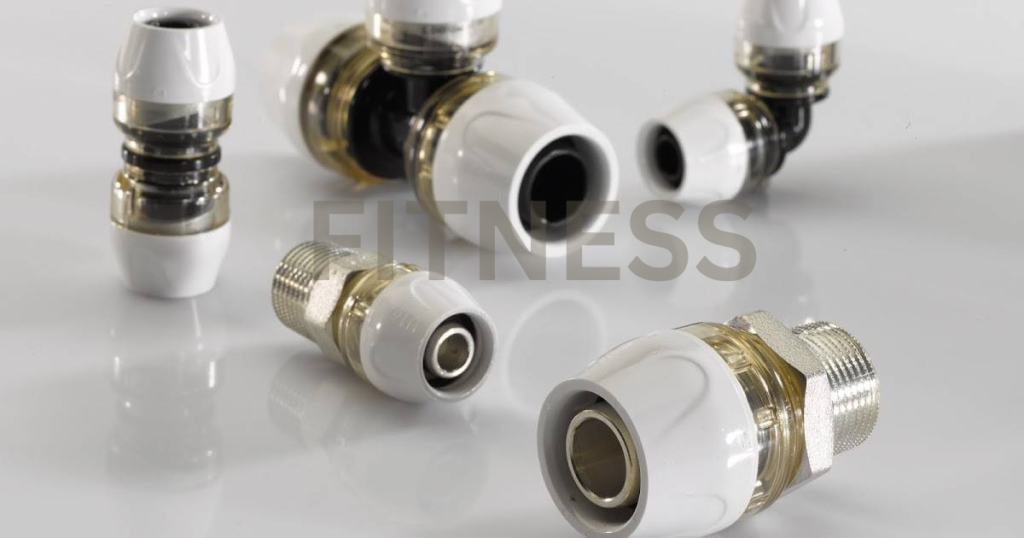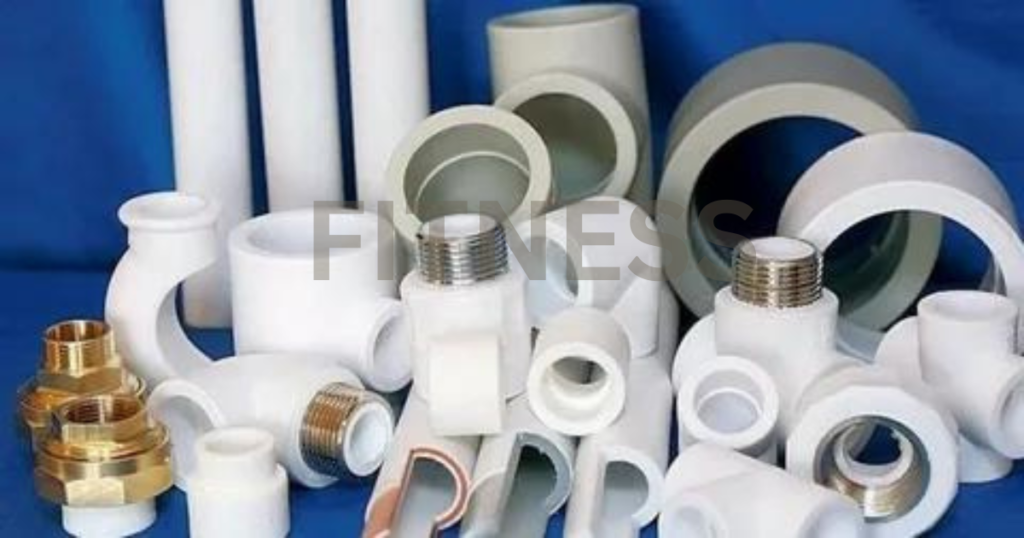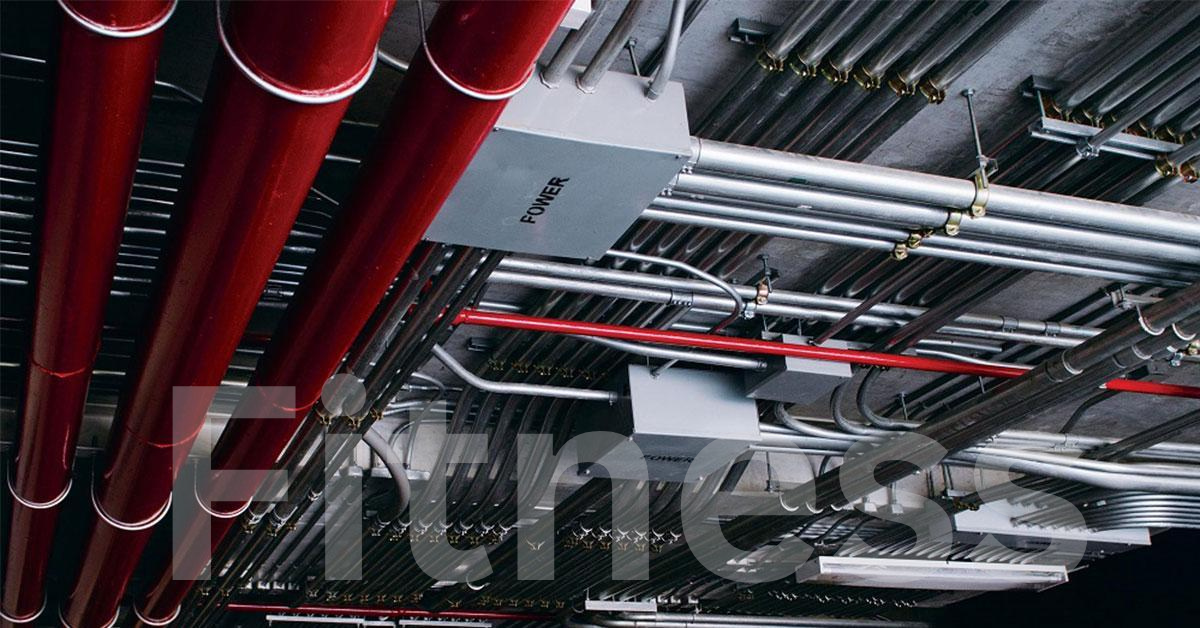1 Inch Conduit Fittings Unveiled, Conduit fittings are important parts of electrical conduit systems because they make sure that electrical wiring moves smoothly and safely. In this section, we’ll set the stage for a more in-depth look at 1 inch conduit fittings by giving readers a quick but useful summary of their importance.
Background
Before you can understand what conduit fittings do so you need to know what conduit systems are in general. An electrical duct keeps wires safe by keeping it away from outside elements and avoiding possible dangers. For this system so conduit valves connect and join the different parts so making the network work well.
Purpose of Conduit Fittings
The main job of conduit fittings is to make secure links between sections of pipe, junction boxes and different electrical devices. These fittings not only make it easier for electricity to flow smoothly so but they also help make the pipe system safer and last longer.
We want to get the reader’s attention in this part by stressing how important conduit connections are for keeping electrical conduit systems safe and working well. We will now get into the details of 1 inch pipe connections so explaining their unique features and how they can be use. Come with us as we break down the basic parts that make up the backbone of electricity systems.
Basics of Conduit
The duct is the most important part of any electrical system because it protects the wires from damage and the elements. To understand the basics so you need to know about the different types of conduit so such as fixed and flexible choices so each of which is design for a specific use or setting.
Types of Conduit
In industrial and business settings so rigid conduit is often used because it is strong and lasts a long time. On the other hand so flexible tubing can be use in many ways and is easy to install so it’s good for places with complicate plans or that need to be change often.
This part aims to explain the basic ideas behind conduit systems so that readers can get a basic idea of the different kinds of conduit that are out there.
Importance of Fittings in Conduit Systems
The pipe protects the system so but it’s the connections that join and make the system work together. Fittings are important because they make safe joints that let electrical wiring pass through without any problems. Without fittings so pipe systems would not have the strength they need to work at their best.
By reading this part, readers will get a better sense of how pipe and fittings work together to make things better. These parts work together to make an electricity system that is both efficient and effective. Come with us as we look into the important part that pipe systems play in the field of electrical engineering.
Importance of Fittings in Conduit Systems
It’s impossible to say enough about how important connections are in the complicated world of pipe systems. This part goes into detail about how important conduit connections are for making sure that electrical conduit systems work are safe and last a long time.

Why Conduit Fittings Are Crucial
The most important parts of a pipe system are the fittings that connect the pieces so junction boxes, and electrical devices. If these connections weren’t there so the pipe system wouldn’t be as strong, leaving wires open to damage from the environment and causing safety risks. For keeping an electrical system strong, the dependability of pipe fittings is very important.
Role in Ensuring a Secure and Functional Conduit System
Fittings for conduits do a lot more than just connect pipes; they also make the whole system work better. Fittings make sure that electrical current flows smoothly by making reliable parts and links. This lowers the chance of problems or interruptions. These fittings provide security and help stop electrical leaks so grounding problemsa and possible fire risks.
The information in this section will help readers fully understand why conduit fittings are such important parts of electrical systems. It becomes clear that conduit and fittings work well together, which highlights how important these connections are for keeping conduit systems structurally sound and working well. In the next few parts, we’ll go into more detail about 1 inch conduit connections, so stay with us.
Overview of 1 Inch Conduit Fittings
Now we’ll talk about 1 inch conduit fittings. This part gives you a full picture of them so including their size and features so the materials they’re made of so the most common uses for them and their compliance with industry standards.
Size and Dimensions
Because they are all the same size so 1 inch conduit fittings are very important for working with electrical lines of different sizes. For proper fitting within pipe systems, it is important to know the exact measurements. This part talks about the usual size and measurements of 1 inch conduit fittings, focusing on how they can work with a lot of different wire setups.
Material Composition
What conduit parts are made of has a big effect on how long they last so how well they carry electricity and how well they fight external factors. Finding out about the materials that are used to make 1 inch conduit fittings can help you understand how they work. The material of the fitting affects its ability to resist rust so heat and mechanical stress. The fitting can be made of steel so aluminum or other metals.
Common Applications
1 inch pipe connections are use in a lot of different fields and situations. The purpose of this part is to show how flexible these tools are by showing how they are use in business buildings so industrial facilities and private buildings. Understanding the common uses helps readers understand how useful 1 inch conduit fits are in a wide range of electrical installations.
Compliance with Industry Standards
To keep things safe and compatible, 1 inch conduit parts must follow the rules and standards set by the industry. This part of the review talks about how important it is to follow the rules and how doing so makes sure that these pieces meet the safety and performance requirements. Readers will learn about the standards that apply to 1 inch conduit fittings, whether they are National Electrical Code (NEC) standards or rules specific to their business.
As readers move through this part, they will gain a thorough understanding of the basic aspects of 1 inch conduit fittings. This will prepare them for further sections that will go into more depth about their different types and specific functions.
Types of 1 Inch Conduit Fittings
This part goes over the different kinds of 1 inch pipe plugs so each of which is use for a different thing in electrical systems. For planning and putting in place a safe and effective conduit system so it is important to know the differences between connectors, joints so elbows or nipples, adapters, caps, plugs, hangers and straps.
Connectors
A safe and effective link is made possible by 1 inch connectors so which are use to connect different sections of pipe. This part looks at the different types of connectors and their materials, helping you understand what factors affect your choice of connectors based on your application needs.
Couplings
Couplings are very important for connecting two pieces of conduit that are the same size and making sure that the run of conduit is smooth and continuous. The readers will learn about the different kinds of connections that can be use with 1-inch pipe systems so taking into account things like the type of material use so how easy it is to install and how long it lasts.
Elbows
When you want to change the direction of a pipe run, elbows are very important. In this part so elbows are further broken down into 90-degree and 45-degree versions so with explanations of their different uses and benefits. To get around barriers and make the best use of room in different settings, it’s important to know what elbows are for.
Nipples
Short pieces of conduit called “nipples” are very important for connecting conduit to electrical devices or making conduit runs longer. This part of the piece talks about the different types of nipples and their materials so which helps you understand how they can be use in different electrical situations.
Adapters
Adapters are use to connect pipes of different types or sizes. This part talks about how important adapters are for working with different pipe sizes and making sure that the system stays compatible and continuous.
Caps and Plugs
Caps and plugs are important parts for closing pipe holes that aren’t being use. This keeps dirt, moisture, and other contaminants from getting inside. People who read this will learn about the different kinds of caps and plugs and how they work to keep the pipe system intact.
Hangers and Straps
To hold and keep cables in place so hangers and straps are use. This part talks about the different types of hangers and straps and how they can be use in different installation situations.
As readers move through this section so they will gain a deeper understanding of the different 1 inch pipe connections. This will prepare them to use these parts in real-world electrical systems.
Installation and Maintenance
For a pipe system to work well and last a long time so it needs to be installer correctly and be service regularly. This part goes over everything you need to know about installing 1 inch conduit fittings correctly so including safety issues to keep in mind so how to keep them in good shape, and how to fix common problems that come up.
Proper Installation Procedures
To make sure that the electrical system is safe and effective so certain steps must be taken when installing 1 inch conduit fittings. This part gives step-by-step instructions that stress correct orientation, safe links, and following industry standards. Showing the right way to put something makes sure that it works well and lasts a long time.
Safety Considerations
When installing electricity, safety is the most important thing. This part of the piece talks about the safety steps that must be taken when installing 1 inch conduit joints. Safety rules so how to handle tools properly and how to avoid getting electrical shocks are some of the things that are talked about. Stressing safety creates a safe place to work for workers and makes the pipe system last longer.

Maintenance Tips
A pipe system will keep working for a long time if it gets regular repair. In this part, you’ll find useful information on how to keep 1 inch conduit fittings, such as how to clean them and look for signs of damage or wear. By following these upkeep steps, you can make the pipe system more reliable and extend its life.
Troubleshooting Common Issues
Even if pipe systems are install and maintained correctly so problems can still happen. This part talks about usual issues like rust so weak connections and electricity leaks. By reading this so readers will learn how to quickly find so solve and fix these problems, which will keep the electricity system running smoothly.
The information in this part will give readers the skills they need to properly install so manage and fix 1 inch conduit fittings. Understanding the ins and outs of the right way to build and maintain pipe systems is important for making them strong and reliable in a range of industrial so business and domestic settings.
Choosing the Right 1 Inch Conduit Fittings
Choosing the right 1 inch conduit fits is an important part of making an electrical conduit system that works well and is reliable. This part talks about the main things that affect the decision-making process. These include the surroundings so the fit of the materials so the load and stress requirements so the cost and the names and makers that are available.
Factors to Consider
There are a lot of things to think about when picking the right 1 inch conduit plugs. This part lists these things, like the exact needs of the installation so the amount of electricity that the system will have to handle and the weather that the conduit fittings will be in. These factors must be carefully consider to make sure that the parts chosen meet the specific needs of the project.
Environmental Conditions
Conduit systems face different problems in different settings. This part of the section talks about how things like high temperatures so amounts of wetness and contact with toxic substances can change the choice of pipe fittings. By knowing about the weather conditions so readers can make smart choices that will make the pipe system last longer and work better.
Material Compatibility
It is very important that pipe joints work well with other elements in the system to avoid rust so degradation or electrical problems. This part talks about how the different types of materials used to make conduit fittings affect the wires so pipes and other things in the area. Readers learn how to choose things that work well together and last a long time.
Load and Stress Requirements
Different applications put different loads and stresses on conduit systems. This section talks about how important it is to know the load requirements and stresses so that you can choose tools that can work in the right circumstances. Matching parts to the predicted load makes sure that the conduit system lasts so whether it’s in a big commercial setting or a home.
Cost Considerations
A budget is a very important factor in the decision-making process. This part talks about how the cost of things like the original investment and possible long-term saves affect the choice of 1 inch conduit fittings. Finding the right mix between price and quality is important for making a pipe system that works well and doesn’t break the bank.
Available Brands and Manufacturers
There are many names and companies on the market that make 1 inch conduit connections. This part of the section talks about well-known names and makers to help readers make smart decisions. Making sure that the parts you buy meet industry standards means looking at the image, quality, and customer reviews of different brands.
As readers go through this part so they will fully understand the factors that should be taken into account when choosing 1 inch pipe fittings. Being able to make well-informed decisions is key to putting in place connection systems that work well in specific situations and meet specific needs.
Case Studies
Real-life examples and lessons are the best way to learn how to use 1 inch conduit fits in the real world. Case studies so which give readers a look at different situations so success stories, lessons learned and new trends are talk about in this part.
Real-world Applications
Looking at how 1 inch conduit parts are use in real life shows how flexible and adaptable they are. Case studies from different fields show how important these items are in a wide range of places, like business buildings, industrial complexes, and private homes. People who read this article learn how useful 1 inch pipe fittings are in a variety of situations.
Success Stories
In success stories, 1 inch conduit connections were strategically chosen and use to make electrical conduit systems that work well and were reliable. By reading about success stories, readers can get ideas and learn about the best ways to do things, which can then help them make decisions.
Lessons Learned
Problems can happen when pipe systems are being put in place. This part talks about problems and how to solve them by sharing lessons learned from real-life situations. Reading about other people’s experiences helps readers predict problems that might come up and plan ahead for how to solve them in their own projects.
Future Trends and Innovations
The field of pipe fittings is always changing, with new ideas and trends coming up all the time. In this section, we’ll look at new technologies, market trends, and efforts to be more environmentally friendly when it comes to 1 inch conduit fittings. By keeping up with the latest news, viewers can get ready for how the business will change in the future.
Market Trends
To stay ahead in the field of pipe systems, you need to know what the market trends are. This part talks about the latest market trends, including things like new technologies, materials, and style tastes. Knowing about market trends gives people the power to make choices that are in line with how the industry is changing.
Sustainability in Conduit Fittings
This part of the section looks at how 1 inch conduit fittings help with eco-friendly methods as sustainability becomes more important in many fields. Readers will learn about eco-friendly pipe systems, designs that use less energy, and products that are good for the environment.
By reading case studies so readers will not only understand how 1 inch conduit fittings can be use in real life and what works so but they will also be able to learn from the problems that other people have had. This part is meant to motivate and educate so connecting what you’ve learn in the classroom to how you can use it in real life.
Future Trends and Innovations
The world of conduit fittings is always changing, as new ideas and improvements shape the future of electrical infrastructure. In this part, we’ll talk about new technologies, market trends, and efforts to make 1 inch conduit fittings more environmentally friendly.
Emerging Technologies
The form and usefulness of pipe connections are always changing because of new technologies. The next part of the piece talks about cutting edge technologies like smart fittings, which may have sensors or internet features built in to make tracking and control easier. Readers who understand these new technologies will be ready for the next wave of innovations in pipe systems.
Market Trends
Trends in the market have a big impact on how conduit parts develop. This part looks at current and future market trends, taking into account things like the rise in demand for energy-efficient solutions, the impact of technology, and the ability to connect to smart building systems. Readers can make choices that fit the changing wants of the industry if they know about market trends.
Sustainability in Conduit Fittings
The focus on ecology is changing how pipe connections are use. This part of the section talks about materials that are good for the environment, methods that use less energy, and environmentally friendly ways to make things. As caring about the environment becomes more important in making decisions, readers learn how 1 inch conduit fittings can help with green projects and environmentally friendly building methods.
Conclusion
In conclusion, our study of 1 inch conduit fittings has covered a lot of ground, including the basics, different types, installation, and things to think about when choosing the right fittings. We started by learning about how important pipe systems are and how fittings are the backbone of these systems, making sure that connections are safe and electricity flows smoothly. The summary of 1 inch conduit fittings gave information about their size, measurements, material make-up, uses, and compliance with industry standards.
FAQs (Frequently Asked Questions)
Why are conduit fittings important in electrical systems.
Pipe fittings are very important in electrical systems because they make safe links between electrical devices, switch boxes, and pipe pieces. They keep the flow of electricity smooth, help keep the pipe system’s structure strong, and keep wires safe from possible dangers.
What are the key considerations when choosing 1 inch conduit fittings.
When choosing 1 inch conduit fittings, it’s important to think about things like the climate, the suitability of the materials, the load and stress needs, the cost, and the availability of trusted brands and makers. These things to think about help make sure that the fits are right for the job.
How do I troubleshoot common issues with conduit systems and fittings.
If you follow the right repair steps, you can fix common problems with pipe systems like missing connections, rust, and electricity leaks. The dependability of the pipe system is improve by inspecting it regularly so finding signs of damage or wear so and fixing the problems that are found.
What emerging technologies are shaping the future of conduit fittings.
New technologies in pipe connections include smart features like sensors or ways to connect to other devices. These new ideas improve tracking and control so which makes the electricity system more quick and efficient.
How can conduit fittings contribute to sustainability in construction.
By using eco-friendly materials, energy-efficient designs, and environmentally friendly ways to make them, conduit fittings can help the environment. By supporting green efforts, pipe systems help encourage builders to build in a way that is good for the environment.


